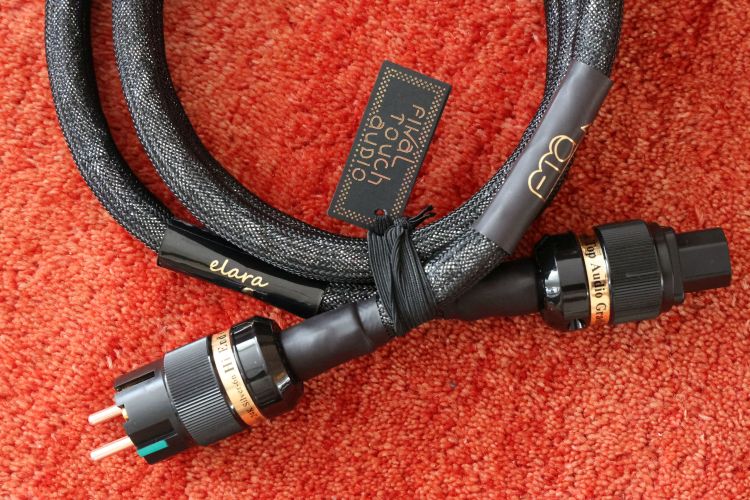
Review sample provided by Final Touch Audio
Retail prices:
900 Euro for 1.5 m
1.100 Euro for 2 m
After the pre-announcement on Facebook, I was asked if I had not reviewed this cable already. And indeed, I had! This is a revisit:-).
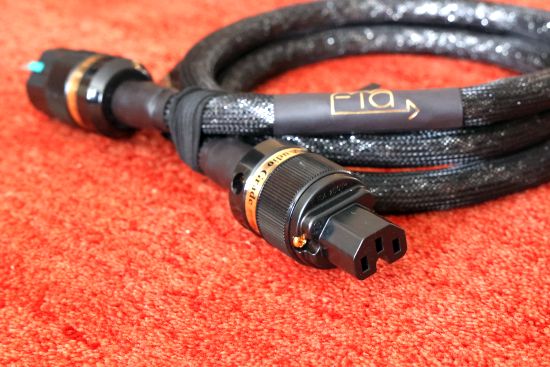
I revisited this cable because I wondered if I would still feel the same about it as I did in 2019. You see, at the time of the original review, the cable deviated from what I had come to know as the Final Touch Audio house sound. By that, I refer to the light-footed, relaxed, fluid, refined, airy, and free-flowing kind of delivery that characterizes the Callisto USB cable and Ganymede interlink.
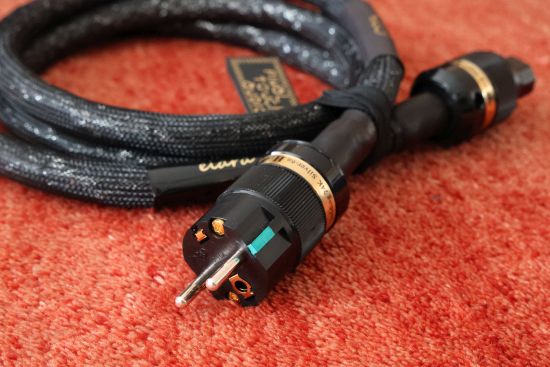
But when reviewing the Final Touch Audio Sinope USB cable and Methis Ethernet cable earlier this year, I found that these cables also possessed a delivery that deviated from what I thought was the FTA House Sound. For instance, the Sinope USB cable has ultra-robust, upfront, and expressive delivery, rather the opposite of the ethereal and airy-refined Callisto USB cable. I wondered if this cable would replace the Callisto but upon checking with the company, Zoran Zubcic confirmed that the two USB cables will co-exist, with the Sinope being the top-tier product. As such, there were now two flavors to choose from. Following this, I felt that maybe the Elara power cable was not so deviant after all.
Another reason for this second take is that my review system and taste have evolved. In the intervening years, I have gained new knowledge, improved my room acoustics, and changed very nearly every cable in the system including the main fuse and the cable that feeds the main audio group. More importantly, I have heard many more power cables.
In order to fully be able to re-test the Elara power cables, I asked for one “normal” C14-equipped cable for the CH Precision L1 preamplifier and one “high-power” C19-equipped cable to power the CH Precision A1.5 power amplifier.
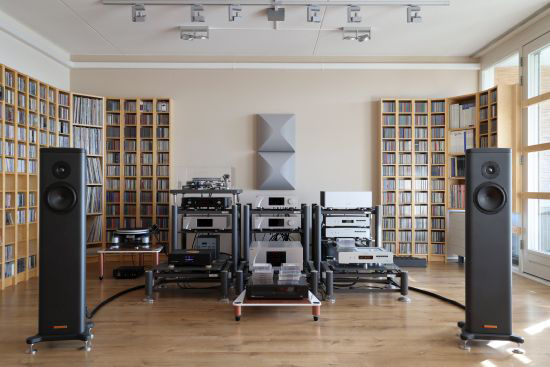
System Context
The core of the main system consists of the CH Precision C1 DAC, L1 preamp, A1.5 power amp with the Grimm MU1, Antipodes K50, and Taiko Audio Extreme servers as main sources, and Magico S1 MkII speakers. All interlinks are Driade Flow Link Reference 808, both balanced and unbalanced. The speaker cables are the Mad Scientist Black Magic. All racks are made by Artesania Audio.
The power for this system is delivered by a dedicated run of solid-core installation wire, sourced in the Breaker Box from a Siemens Sitor Cylindric Fuse Cartridge, and ending in three GigaWatt G-044 single Schuko Wall Sockets behind the audio system. See the main system page for more info.
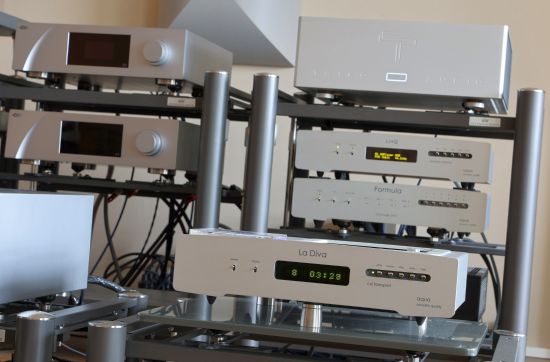
Listening
From the very first moment that I connected the Elara power cables to the CH Precision L1 preamp, it was obvious that my conclusion would be different than before. The delta was so large that I double-checked with Zoran if the cable’s design had changed between now and then but that is not the case.
My conclusion in the original review was that the Elara cable provided a super-explicit, crisp, and very tightly controlled sound that is simultaneously highly refined and airy, as well as texturally rich and timbrally natural.
Listening to this cable again, I no longer hear any evidence of it being in any way too tight or controlled. It still sounds texturally rich and beautifully open, airy, and refined, but now accompanied by a bass that is entirely fitting for the cable’s otherwise fluid and effortlessly free-flowing nature. Rather than controlled, I think the bass is articulate and well-resolving, but relaxed and smooth, just like the rest of the cable’s sonic spectrum. In fact, the power cable now sounds much more in line with many of the specific capabilities of the Callisto USB cable.
I’m glad to have decided on this second take for, clearly, all the other power cables that I have heard in the intermediate period have shifted my perspective. In hindsight, though, it makes perfect sense. In the original review, I was comparing the Elara to cables like the Furutech FP-TC31, Cardas Clear, and Fusion Audio Romance, which I now know all sound rather smooth and sweet. Sure, the Belden was also thrown in the mix but recent experiences have brought to light that this cable also had some properties that were only revealed later. While the Belden may appear to be quite neutral and even-handed overall, and even a little explicit in the lower treble region, I found that it also injects a good amount of blur and imprecision in the upper bass and lower midrange.
Having established the new baseline, I now proceeded to also equip the A1.5 power amp with a Final Touch Elara.
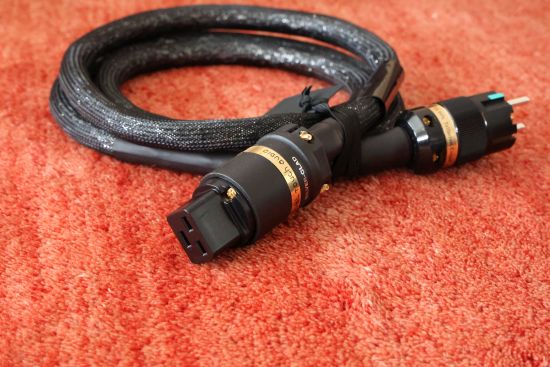
Above: Elara with high-current C-19 connector, for the CH A1.5 (or for Krell, Jeff Rowland, and Audio Research amplifiers, to mention just a few)
Listening to the Elara duo powering the two CH Precision components further established my renewed impression of the cables as being effortlessly fluid, ultra-refined, and super-airy, and not at all too tight, or otherwise in any way technical. Rather, after recent power cable experiences, I now feel that they are on the relaxed side of neutral. Don’t get me wrong, along with impressive resolution, everything is clearly rendered and there’s absolutely no blur, but it’s not as tight and crisp, or as incisive as the GigaWatt LC-2 EVO. Of course, that’s only logical, since the GigaWatt employs solid-core conductors which are known to excel precisely in these areas. Basically, with solid-core and litze, you have two “schools” of cable design that both have their relative pros and cons. As always, it’s a matter of finding out what a given system needs and applying the cables to match.
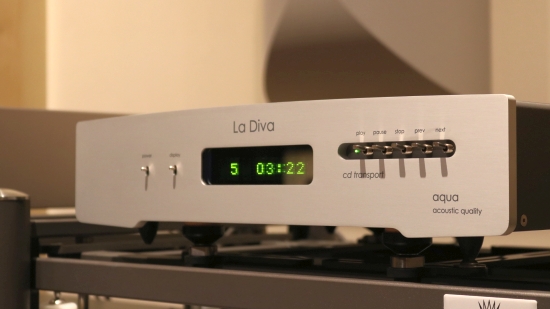
As a final test, I reconnected my usual power cables to the CH components to shift the focus to the Aqua Diva M2 CD transport. Just like most of my other components, I used the Aqua predominantly with a Belden power cable. It’s better than a stock cable and provides predictable results. But as I found when first getting acquainted with the Diva M2, the transport prefers a firm hand in terms of positioning and power cables. I always knew the Belden was not the final word in resolution, but I thought it provided even-handed and predictable results. At least in terms of neutrality and control, I expected the Belden to do well, certainly for music servers, streamers, and CD transports.
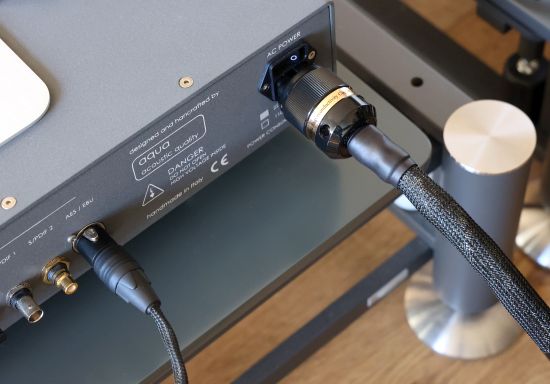
As it turns out, the Diva responds fabulously well to the Elara! Substituting the Belden for the Elara also brings a more precisely rendered and well-controlled bass while unequivocally unveiling the Belden as being uneven and rather lowly resolving. Interestingly, the Elara raises the precision and clarity while at the same time introducing an expansive and well-lit canvas in which the individual sounds inhabit more space and more with beguiling liquidity. The treble also becomes airier and more open, and significantly more resolving, the low bass seemingly goes deeper and is more voluptuous, the midrange is lusher and richer and the entire presentation becomes more organic.
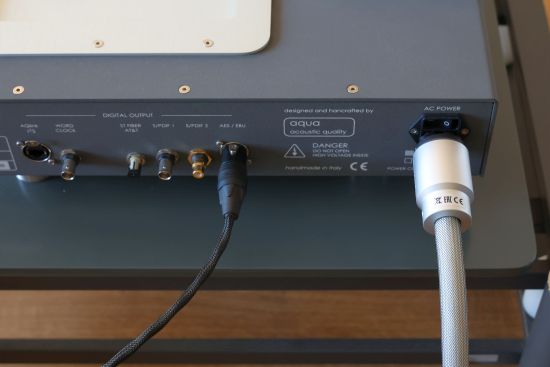
A final comparison with the GigaWatt PowerSync ULTRA (thick litze) confirms the Elara’s unique take. While the GigaWatt, as expected, is more robust and indeed more incisive, it is also drier and more earthy, whereas I would describe the Elara as more delicate and ethereal. One’s more neutral while the other is more magical. Between the two, the pacing is quite comparable and although the Elara’s midbass is not as punchy as it can be, the transient attack and overall dynamic impact are fully retained. It’s rather unusual, as the Elara seems to be tight and relaxed at the same time!
Usually, I end up with a single favorite but this time it’s less clear cut… Between the two GigaWatts and the Final Touch Audio Elara, the latter certainly has the most unique take. But all three cables have their appealing qualities. The CH Precision components do work best with the two different GigaWatt cables but where the Diva M2 is concerned, I find it hard to pick a favorite. One part of me seeks ultimate robustness and control while the other also wants deep emotional involvement. As it often is in audio, one has to decide between two opposite sides.
Perhaps its most alluring aspect, the Elara has an effortlessly continuous, “analog-like” sound, rather the opposite of dry and stereotypical “digital”. Of course, I’m paraphrasing just for illustrative purposes. Digital can certainly sound utterly fluid but between the Aqua LinQ streaming endpoint and the Aqua Diva M2 CD transport, the latter does rather neatly illustrate the CD format’s naturally more prominent liquid and continuous quality. And with the Elara, it’s exactly this quality that is allowed to further blossom. Given that this is one of the reasons why I still like to play CDs, I think I have actually reached a conclusion after all!
The combination with the Aqua Diva M2 CD transport leads to such a compelling performance that it makes me sit and listen and not want to try other cables. Clearly, it’s doing something very right!
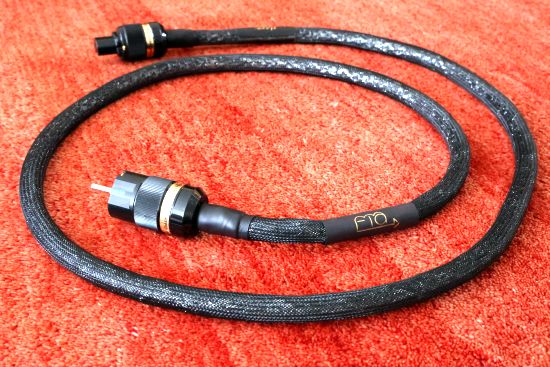
Conclusion
The Final Touch Audio Elara offers a rather unique balance in which it combines an unforced and free-flowing delivery with immense resolution, high precision, and great clarity. It paints a wide and deep soundscape in which individual sounds have lots of space and are presented in a wholly unforced and liquid manner.
The cable sounds relaxed and very gently sweet. While it is the opposite of a down-to-earth approach, and its midbass is not as punchy as it can be, the cable offers a very good transient attack and overall dynamic impact. It’s rather unusual, but this cable seems to be tight and relaxed simultaneously!
After these new experiences, the Elara comes Highly Recommended!

External Links
Manufacturer: Final Touch Audio

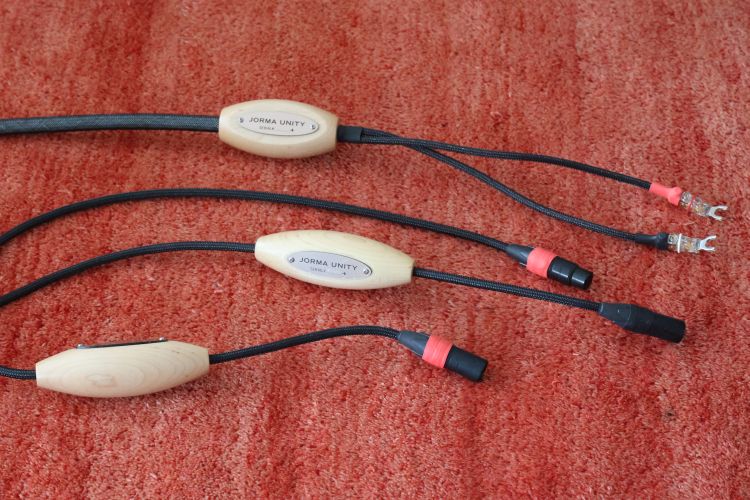
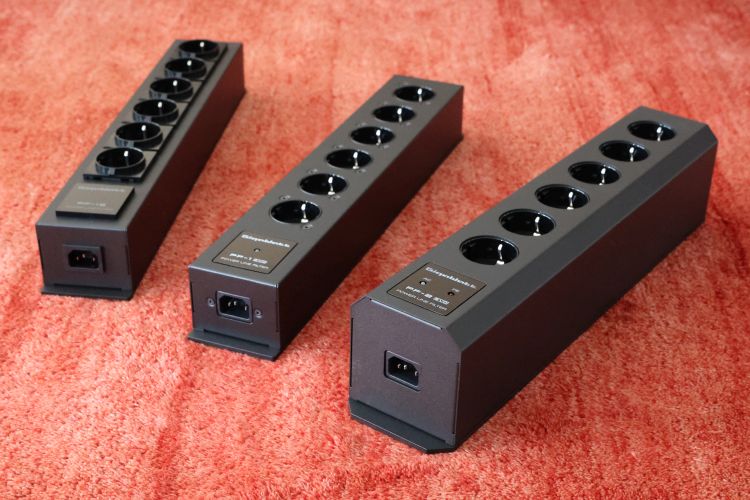
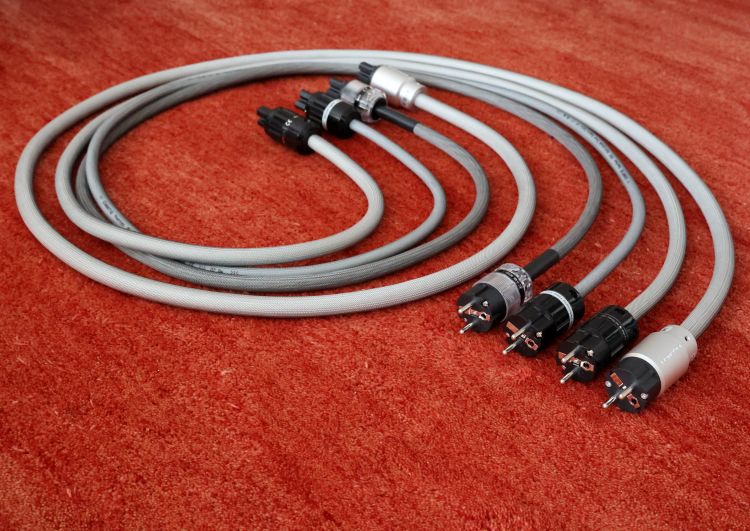
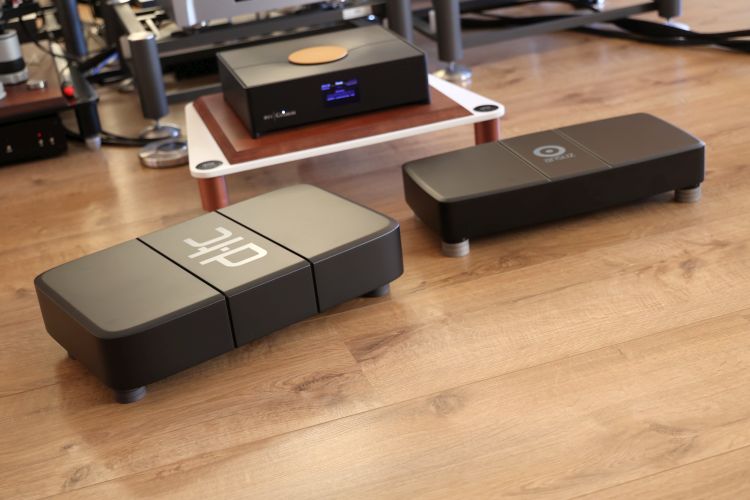
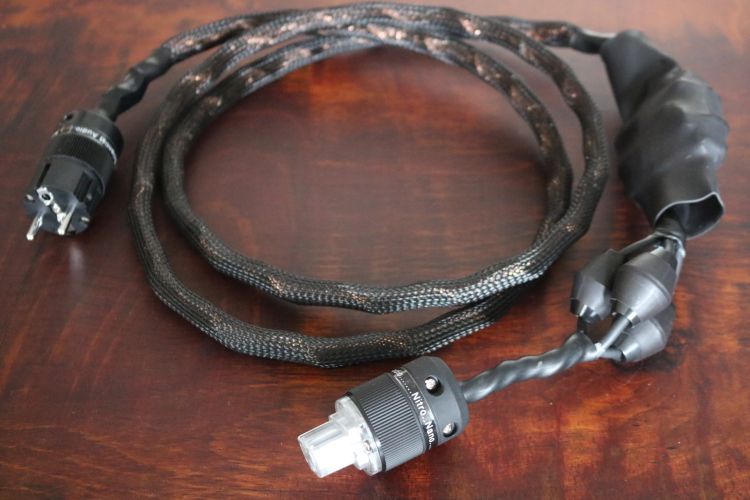
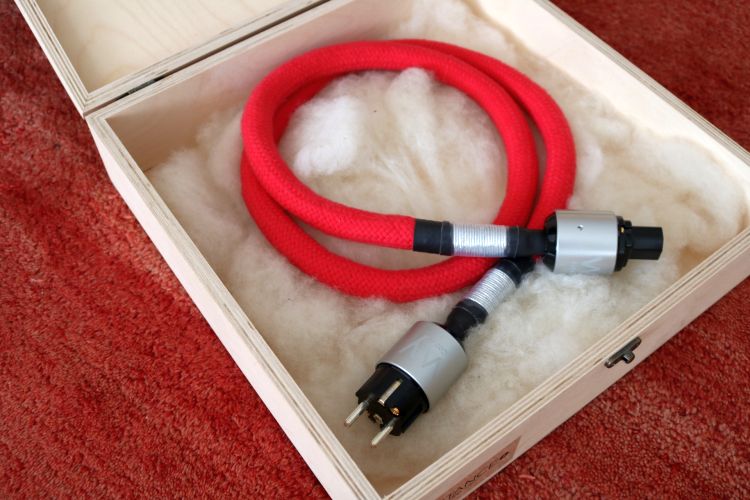
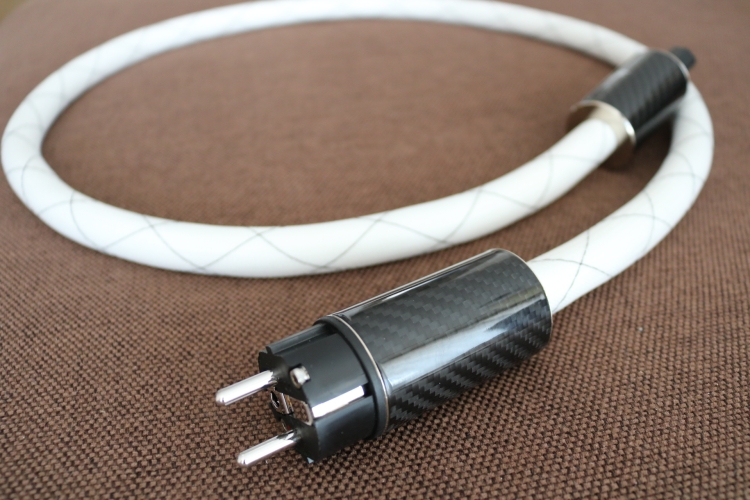
1) You have an impressive website and have reviewed a boatload of good stuff. I hope your website greatly helps pay for your “hobby”.
2) I like your integrity, and rationality:
1. You observe what you observe.
2. You are willing to throw an idea away if an observation contradicts it.
3. You draw good conclusions from what you have observed. When data is limited, your conclusion is limited.
4. You are willing to state what you have observed and what you have concluded.
I am pleased. Thank you.
Thanks for the great feedback, Brandon!
Christian kudos to you for going back to review a component you reviewed previously. Almost no one does that and systems change and grow and as you noted one’s tastes can change. Very well done as always!
Cheers,
Jon
Cheers, Jon! 🙂
Hi Christiaan,
I have recently bought the Elara power cord. I am very happy with it, and I agree with your review. I am using it on the LTA (Linear Tube Audio) dedicated power supply for the Exogal Comet dac.
It enhances the analog character of the Exogal Comet. the Elara has the great merit of freeing the mind from typical audiophile technicalities and simply making room for the music, while remaining very balanced and coherent.
It’s a very “immersive” cable.
It gives the sound an analog character while still remaining very detailed, transparent, and tonally faithful. The details and nuances of the soundstage are beautiful, bringing the music to life with a strong sense of realism.
It’s not easy to bring all these qualities together — usually, something has to give somewhere.
Thanks for reviewing it!
Thanks for the nice feedback, David!